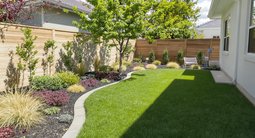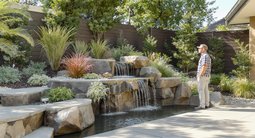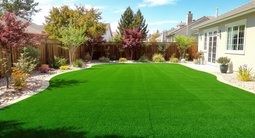TL;DR
Start low-budget lawn repair by mowing high, testing soil, and timing crabgrass control before overseeding in fall. The simplest how to fix a lawn full of weeds on a budget plan: spring pre-emergent for crabgrass, summer spot-spraying, then fall aerate/overseed and feed. Water 0.5–1 inch weekly and sharpen blades; these basics do most of the visual heavy lifting.
Why your lawn is mostly weeds—and the simple place to start

Seasonal lawn care tools and samples illustrate key steps to outcompete weeds and restore your yard affordably.
If your lawn is mostly weeds—especially crabgrass—you’re not alone. Weeds move into bare soil because they germinate faster and tolerate stress better than thin turf. The fix isn’t fancy chemicals or expensive equipment; it’s timing, consistency, and a few budget moves that create dense grass so weeds lose the race. Here’s the thing: you’ll make the biggest gains by doing the right task in the right season. Use a pre-emergent herbicide in spring to stop crabgrass, then overseed in early fall when cool nights favor turf over weeds. In between, mow high and water correctly. This cadence turns a “lost cause” into a lawn that looks half-decent fast—and keeps getting better.
Step-by-step low budget lawn repair plan (crabgrass included)
A lawn full of weeds can be turned around with four seasonal moves: spring pre-emergent, summer spot control, fall overseeding, and proper mowing and watering all year. - Early spring: stop crabgrass before it sprouts Apply a pre-emergent herbicide when soil temps reach 50–55°F for several days (often around forsythia bloom). Look for prodiamine or dithiopyr; one 10–15 lb bag typically covers 5,000–10,000 sq ft and costs $20–$45. Water it in lightly per label. Pre-emergent doesn’t stop seeds from germinating; it prevents new seedlings from establishing roots, which is why it’s effective on crabgrass. - Don’t seed after pre-emergent If you plan to overseed, wait until fall. Pre-emergent can remain active for 8–16 weeks (or longer, depending on product), which will also inhibit the grass seed you paid for. Experts recommend separating pre-emergent and seeding by seasons for best results. - Late spring to summer: mow high, water right, spot-spray Mow at 3–4 inches for cool-season lawns; taller blades shade soil, reducing crabgrass germination by keeping it cooler. Keep mower blades sharp; sharpening costs $8–$15 and reduces turf stress. Lawns need about 0.5–1 inch of water per week from rain or irrigation; use a tuna can to measure. Spot-spray broadleaf weeds and crabgrass escapes with a selective post-emergent (quinclorac controls crabgrass in many cool-season grasses). Treat only what you see to keep costs low. - Fall: aerate, overseed, and feed Overseed in early fall when nights cool: tall fescue and Kentucky bluegrass thrive with soil temps above ~60°F for germination. Core aeration improves seed-to-soil contact; rent a machine for $60–$100/day or split with neighbors. Spread 3–5 lbs of quality, region-appropriate seed per 1,000 sq ft, topdress with 1/4 inch of compost, and apply a starter fertilizer (higher phosphorus) at label rate. Keep the top 1 inch of soil moist until germination, then taper watering. - Quick user insight One first-time homeowner told me her “breakthrough” was measuring water and raising the mower to 3.5 inches. She did nothing fancy—just pre-emergent, sharp blades, and fall seed—and her lawn went from patchy to presentable in one season.
Anecdote
A first-time homeowner stopped scalping the grass and set the mower to 3.5 inches. With a spring pre-emergent and a fall overseed, the yard went from sparse and weedy to thick and green within one year, without installing irrigation or buying new tools.
Common mistakes and misconceptions that cost time and money
Starting cheap doesn’t mean cutting corners; it means avoiding the wrong ones. - Seeding right after pre-emergent Pre-emergent herbicides inhibit new roots, so new grass seed won’t establish. Schedule pre-emergent in spring and overseeding in fall to avoid wasting seed. - Scalping the lawn to “fight weeds” Cutting short (under 2.5 inches) heats the soil and invites more crabgrass. Mow cool-season grass at 3–4 inches to shade out weed seedlings. - Over-fertilizing for a quick green-up Too much nitrogen burns turf and feeds weeds. Designers often advise 0.5–1 lb of nitrogen per 1,000 sq ft per growing month, tailored to your grass type and soil test. - Buying tools you won’t use Manual aerators and thatchers are back-breakers and ineffective. Rent a plug aerator for a day or hire it out; it’s cheaper and does a better job. - DIY “miracle” fertilizers Household concoctions can add salts and scorch turf. Stick to reputable starter fertilizer and labeled herbicides for predictable, safe results.
Pro tips and expert insights to stretch a small budget
Small upgrades at the right time make a big difference on a tight budget. - Get a soil test before you spend A basic test ($10–$25 through local extension services) guides lime and nutrient needs so every dollar actually helps your lawn. - Choose seed like a pro Buy region-specific, weed-free seed from a local supplier; blends with tall fescue plus 5–10% Kentucky bluegrass offer durability and self-repair in many cool-season regions. - Edge for instant curb appeal Crisp edges along sidewalks and beds make any lawn look greener. A string trimmer or flat spade and 30 minutes can elevate a yard fast. - Be patient with timing Crabgrass germinates as soils hit the mid-50s°F; fall is best for cool-season overseeding. I’ve seen more success from good timing than from any single product.
Real stories, real lawns: what worked on a budget
Budget turnarounds are won with small, consistent moves. - The mower-height miracle A couple with a crabgrass lawn raised their mower to 3.5 inches, sharpened blades, and followed a spring pre-emergent. By August, the lawn felt denser, and they needed fewer spot sprays. The takeaway: taller grass changes the microclimate and slows weeds. - Neighborhood rental, neighborhood results Four neighbors split an aerator rental for $80 and overseeded in early fall with a tall fescue blend. They topdressed with city compost and watered lightly. By Halloween, thin patches were filled, and sidewalks looked professionally edged. The takeaway: share rentals and buy quality seed. - The late start that still worked One homeowner missed spring pre-emergent. Instead of giving up, they mowed high, spot-sprayed in June, and focused on a textbook fall overseed with starter fertilizer. The lawn didn’t look perfect by July, but by next spring it was unrecognizable. The takeaway: there’s always a path forward if you stick to the seasonal plan.
Visualization Scenario
Picture an April afternoon: you edge a clean line along the sidewalk, spread a single bag of pro-grade pre-emergent, and run the sprinkler long enough to fill a tuna can halfway. In September, you punch neat aeration holes, broadcast a tall fescue blend, dust it with compost, and give it a gentle shower. By next spring, the same patchy yard reads as one continuous green plane—thicker at the curb, softer underfoot, and finally easy to maintain.
FAQ
- How do I start low budget lawn repair?
Begin with spring crabgrass control (pre-emergent), mow at 3–4 inches, water 0.5–1 inch weekly, then overseed in early fall with a starter fertilizer. - When should I put down pre-emergent for crabgrass?
Apply pre-emergent when soil temperature hits 50–55°F for several days or when forsythia blooms; water in per label for best crabgrass control. - Can I overseed after using pre-emergent herbicide?
No. Pre-emergent inhibits new seedling roots for weeks to months; overseed in early fall after the product’s residual window has passed. - What’s the best way to kill weeds on a budget?
Spot-spray with a selective post-emergent for broadleaf weeds and crabgrass escapes, following label rates; treat only visible weeds to save money. - How much should I water my lawn each week?
Most lawns need 0.5–1 inch of water weekly from rain or irrigation; measure with a tuna can and water deeply but infrequently to encourage deep roots.
Keep it growing: the simple routine that wins
You don’t need a big budget to outcompete weeds. Start with spring pre-emergent for crabgrass, mow high and sharp, water 0.5–1 inch weekly, then pour your effort into a thoughtful fall overseed. In a year, the yard that stressed you out will feel easy to maintain. Want to preview curb-appeal ideas, edge lines, or groundcover transitions before you commit? Try visualizing options with ReimagineHome to see fast, low-cost concepts that fit your lawn’s shape and sun.
.svg)

.svg)














.png)